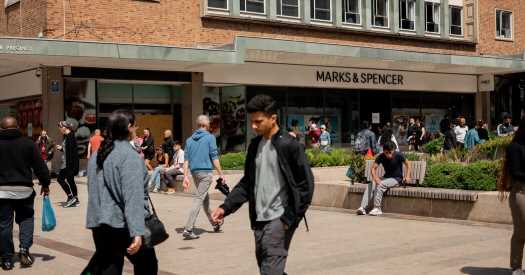Britain’s inflation rate held steady in May, frustrating expectations that price increases would slow down, according to data released Wednesday, the day before the country’s central bank is widely expected to raise interest rates again.
Consumer prices rose 8.7 percent from a year earlier, the same as in April, the Office for National Statistics said. Economists had forecast it would dip slightly. The data is likely to compound concerns that Britain’s cost-of-living crisis may intensify in the coming months as mortgage holders confront the burden of higher interest rates that are being pushed through to tackle inflation.
The Bank of England is expected to lift interest rates for a 13th consecutive time, to 4.75 percent, on Thursday, the highest since early 2008, to address stubbornly strong inflation pressures.
Last week, wage data showed pay growing faster than expected. On Wednesday, the statistics agency said core inflation, which excludes energy and food prices and is used to assess how deeply inflation is embedding in an economy, rose to 7.1 percent in the year through May, the fastest pace since 1992. Services inflation, an indicator that is closely watched by policymakers, climbed to 7.4 percent, from 6.9 percent in April.
The rise in core inflation is “something that may cause some concern,” Grant Fitzner, the chief economist at the statistics agency, told the BBC.
Britain’s headline inflation rates has slowed from a peak of 11.1 percent in October, but it’s still uncomfortably sticky. It’s much higher than in the United States, where the Consumer Price Index rose 4 percent in May from the year before, and the eurozone, where inflation averaged 6.1 percent last month for the 20 countries that use the euro. The Federal Reserve has paused its interest rate increases, and traders are betting that the European Central Bank will raise rates just once or twice more; in Britain, though, investors are predicting the central bank will be forced to raise rates for longer to stamp out inflation.
Andrew Bailey, the governor of the Bank of England, said last week that policymakers still expected the inflation rate to come down, but “it’s taking a lot longer than expected.”
These expectations are shown through rising yields on government bonds, which now exceed the levels reached during Liz Truss’s brief but turbulent stint as prime minister last fall.
In response, mortgage rates are rising too. Last weekend, the average rate for a two-year fixed-rate mortgage hit 6 percent for the first time this year.
Last month, the central bank warned that many mortgage holders had not experienced the cost of higher interest rates yet. About 1.3 million households are expected to reach the end of their fixed-rate term by the end of the year. And the average mortgage holder in that group will see their monthly interest payments increase about 200 pounds ($255) a month, or £2,400 over the course of a year, if their mortgage rate rises 3 percentage points, which is what mortgage quotes suggested last month, the bank said.
The additional financial strain follows months of higher prices, from energy bills to groceries. Food and nonalcoholic drink prices rose 18.3 percent in May from a year earlier.
“We know how much high inflation hurts families and businesses across the country,” Jeremy Hunt, the chancellor of the Exchequer, said in a statement on Wednesday, adding that the government’s plan to halve the rate of inflation would be the best way to keep costs and interest rates down.
“We will not hesitate in our resolve to support the Bank of England as it seeks to squeeze inflation out of our economy,” he said.
Eshe Nelson is a reporter in London, where she writes about companies, the British economy and finance. @eshelouise
Source: Read Full Article
